How Green Was My Valley Blu-ray Movie
HomeHow Green Was My Valley Blu-ray Movie 
Fox Studio Classics20th Century Fox | 1941 | 119 min | Not rated | Jan 15, 2013
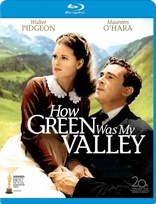
Movie rating
7.9 | / 10 |
Blu-ray rating
| Users | 4.6 | |
| Reviewer | 4.0 | |
| Overall | 4.6 |
Overview
How Green Was My Valley (1941)
Sixty year-old Huw Morgan looks back on his life as a boy in a small Welsh mining town. His reminiscences reveal the disintegration of the closely knit Morgan's, and his devoted parents, while capturing the sentiments and issues of their time.
Starring: Walter Pidgeon, Maureen O'Hara, Anna Lee (I), Donald Crisp, Roddy McDowallNarrator: Irving Pichel
Director: John Ford
| Drama | Uncertain |
| Melodrama | Uncertain |
| Period | Uncertain |
| Family | Uncertain |
Specifications
Video
Video codec: MPEG-4 AVC
Video resolution: 1080p
Aspect ratio: 1.33:1
Original aspect ratio: 1.37:1
Audio
English: DTS-HD Master Audio 5.1 (48kHz, 24-bit)
English: Dolby Digital Mono (192 kbps)
Spanish: Dolby Digital Mono
French: DTS 5.1
Spanish: DTS-HD Master Audio Mono
German: DTS 5.1
Italian: DTS-HD Master Audio Mono (48kHz, 24-bit)
Spanish: Dolby Digital=Latin American / DTS-HD Master Audio=Castilian
Subtitles
English SDH, French, German, Italian, Japanese, Portuguese, Spanish, Danish, Dutch, Finnish, Norwegian, Swedish
Discs
50GB Blu-ray Disc
Single disc (1 BD)
Playback
Region free
Review
Rating summary
| Movie | 4.0 | |
| Video | 5.0 | |
| Audio | 4.0 | |
| Extras | 3.0 | |
| Overall | 4.0 |
How Green Was My Valley Blu-ray Movie Review
Pre-war Ford's eulogy for a coal mining clan.
Reviewed by Casey Broadwater January 18, 2013It's now seen as one of the biggest retrospective upsets in Academy Awards history; in 1942, John Ford's How Green Was My Valley beat out both Citizen Kane and The Maltese Falcon for Best Picture, with Ford also taking the Best Director prize out from under Orson Welles. The film won three additional awards, including Best Cinematography (Black and White), which almost certainly should've gone to Gregg Toland for his innovative deep focus photography on Kane. Of course, this was not the first nor the last time The Academy would choose poorly, but it is one that everyone remembers. After all, Citizen Kane is still widely considered the best American film of 20th century, while How Green Was My Valley feels quaintly outdated now, an expansive but too-loosely told melodrama that's practically weepy with nostalgia. But let's not sell it short. If it's not a great film—and it's not, next to Citizen Kane anyway—it's at least a good one when taken on its own significant merits. A year earlier, John Ford had made his gorgeous adaptation of John Steinbeck's The Grapes of Wrath, and How Green Was My Valley, based on a 1939 novel by Richard Llewelyn, resonates with many of the same themes—rural poverty, socio-economic upheaval, and a pro-union subtext that made 20th Century Fox execs uneasy.
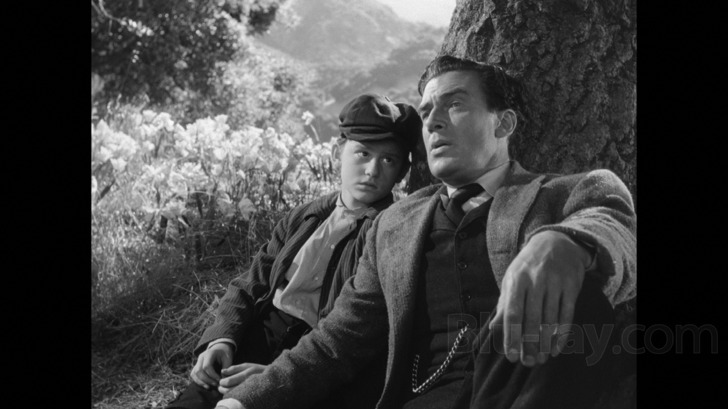
Producer Daryl F. Zanuck originally envisioned the film as a kind of Gone With the Wind killer, a 4-hour Technicolor epic shot on location in Wales, but the Nazi bombing of England nixed that idea. Production was moved instead to the Fox Ranch in Malibu Canyon, where an enormous—and impressive—outdoor village set was constructed, with smoke stacks, a long lane, and a row of stone houses that stretches to the top of a tall hill. To pass off Southern California as Wales, Technicolor was ditched in favor of stark black and white, but this gives the film a gritty, world-weary look that counteracts some of the unabashed sentiment.
Structured as a memory play—like The Glass Menagerie or Dancing at Lughnasa—the film tells the story of the blue-collar Morgan family, a salt-of-the-earth clan in South Wales at the turn of the 20th century. We take the perspective of the youngest son, pre-teen Huw (Roddy McDowell), who's wistfully reflecting back on the events of his childhood from the vantage point of old age. In his poetic opening narration, he remembers his home valley as it existed then: "Green it was and possessed of the plenty of the earth...the black slag, the waste of the coal pits, had only begun to cover the side of our hill, not yet enough to mar the countryside, nor blacken the beauty of our village." Much of the dramatic action centers around the colliery at the far end of town, where all the local men earn their livings.
Or try to, anyway. The times are a'changing, and men from a nearby ironworks—willing to work for next to nothing—have taken positions at the coal mine, driving down pay for everyone else. God-fearing patriarch Gwilym Morgan (Donald Crisp) wants to believe that the owners of the mine have the best interests of the workers at heart—"They're men too, like us," he says—but his grown sons aren't blind to the financial realities. They form a union against their father's wishes and go on strike, but the influx of cheap labor has already taken its toll; many of the men lose their jobs, those who remain no longer earn a living wage, and the town will never quite be the same.
This darkening economy, which would've still seemed pertinent at the tail-end of the Great Depression, is the backdrop for a narrative that's highly episodic—arguably too much so—moving from one incident in Huw's life to the next. He falls in puppy love with Brownyn (Anna Lee), who's engaged to be married to his eldest brother, Ivor (Patric Knowles), and tumbles—more literally—into a frozen stream with his mother, Beth (Sarah Allgood), injuring his legs. Later, as the first in his family to attend a public school, he faces the bullying of his peers and the taunts of his teacher—who sarcastically calls him "the little genius from the coal pits"—causing him to ditch his education and disappoint his father by choosing to work in the mines instead. Huw is the soul of the film, and young Roddy McDowell gives a performance that's tender and authentic, all wide eyes and quivering lips and earnestness. It's a hard-knock life, and the sight of the boy, dirty-faced and pushing a mine cart deep underground, is unexpectedly moving.
Surrounding Huw, other stories play out. Then nineteen-year-old Maureen O'Hara has a small role as his sister, Angharad, who falls in love with the town's new preacher, Mr. Gruffyyd (Walter Pidgeon), but is forced into a loveless marriage with the wealthy mine owner's son. One of the Morgan boys dies in an accident, several of the others move away seeking better fortune—to America, Australia, New Zealand—and the family slowly breaks apart, as most families inevitably do.
Unlike The Grapes of Wrath, which has a powerfully direct A-to-B-to-C travelogue story, How Green Was My Valley sits in one place and sprawls out in all directions. Consequently, none of the individual threads are as impactful as they might be—some characters disappear from the story for long stretches, and most are only meagerly developed—but as a whole, the film amasses a cumulative feeling of loss and sadness, cut through with a defiant shimmer of hope. You can see why it was popular with post-Depression audiences who saw the Second World War barreling unavoidably toward them; in How Green Was My Valley, poverty and death are overcome by hard work, fond memories, and love.
How Green Was My Valley Blu-ray Movie, Video Quality 
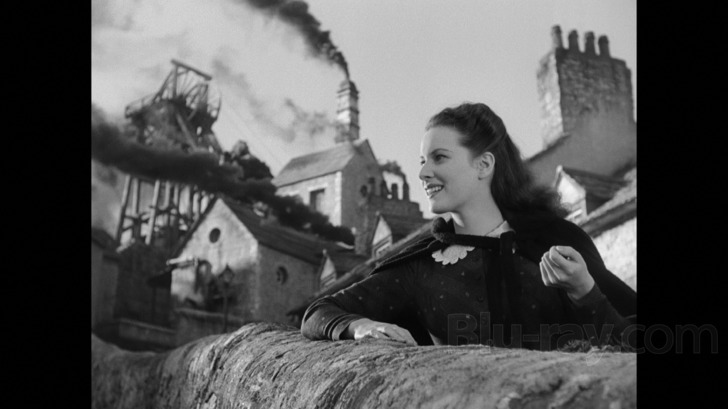
20th Century Fox's Blu-ray presentation of How Green Was My Valley is simply stunning, with a 1080p/AVC-encoded transfer of a 35mm print— or perhaps the original negative, I haven't gotten any details yet—that's been carefully, lovingly restored. You'll notice a few fleeting white specks across the duration of the 2-hour film, but that's it—no scratches, no hairs, no debris, not even any sustained brightness or contrast fluctuations. Better yet, even with the digital cleanup, the film's grain structure has been left fully intact, for an image that's natural, filmic, and unmarred by digital noise reduction or edge enhancement. Clarity is exceptional, so much so that when my wife walked by and saw the picture, she asked if the film was shot on 70mm. (I love that she knows the difference.) Every detail of the characters' craggy, filthy, or otherwise weatherbeaten faces is easily discernible, and clothing textures—there's a lot of wool in this one—are almost palpable. The black and white balance of Arthur C. Miller's cinematography is handled beautifully too, with deep blacks and crisp but never overblown highlights. For a film of this vintage, it's hard to imagine a better transfer.
How Green Was My Valley Blu-ray Movie, Audio Quality 

Knowing the film was originally in mono, purists may cringe when they spot "DTS-HD Master Audio 5.1" on the back of the case. Let me assure you, however, this is a multi-channel mix in name only. There are a few instances where the rear speakers are used as quiet bleeding room for ambience and music—I'm thinking the scene of Ivor and Bronwyn's wedding, where you can hear singing in the surrounds—but most of the track is firmly anchored up front, with no out-of-place effects or ham-fisted attempts at "immersion." Some of the Welsh sing-a-longs get a bit crackly in the upper registers, but otherwise, the mix is wonderfully clear, clean, and dynamically grounded. Most importantly, dialogue is always balanced and easy to understand. The disc includes several dub and subtitle options; see the top of the page for details.
How Green Was My Valley Blu-ray Movie, Special Features and Extras 
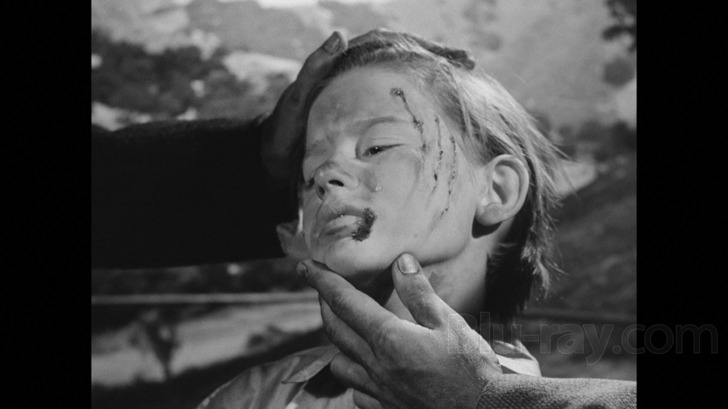
- Audio Commentary: This highly informative track is split up between the reminiscences of actress Anna Lee Nathan—who played the beautiful Bronwyn, Huw's crush—and the more scholarly, critical and historical remarks by Joseph McBride, author of Searching for John Ford. A worthwhile listen.
- Hollywood Backstories: How Green Was My Valley (SD, 24:34): A made-for-TV mini-documentary on the making of the film, taking us from Richard Llewelyn's novel to the film's near-sweep of the 1942 Academy Awards. The program is notable for its interview with Nathan H. Duran, who won the film's Oscar for Best Art Direction.
- Theatrical Trailer (HD, 1:45)
How Green Was My Valley Blu-ray Movie, Overall Score and Recommendation 
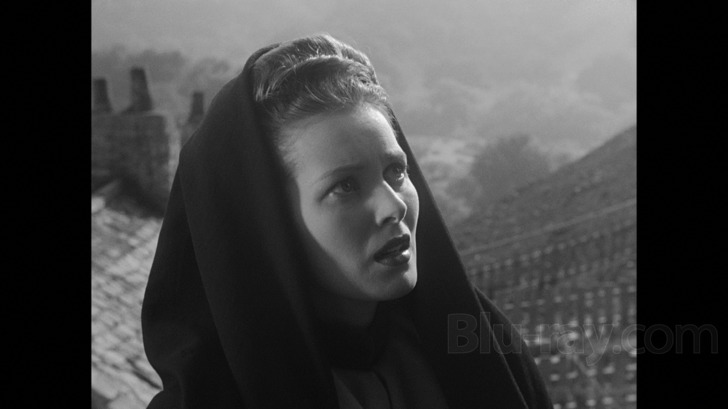
How Green Was My Valley is forever known as "the one that unjustly beat Citizen Kane at the Oscars," but this does a disservice to the film, a gorgeous mid-century melodrama that may not have the gall or brains of Orson Welles' classic, but does have plenty of heart. While director John Ford is best known for his westerns, How Green is a fantastic reminder that he could handle sweeping, multi-generational family dramas too. He even claimed it was one of his favorites among his own films, and there are a cult of fans who certainly agree. They'll be awed by 20th Century Fox's new Blu-ray release, which features a stunningly restored high definition transfer, a faithful lossless audio track, and some informative extras. Highly recommended!
Similar titles
Similar titles you might also like

Cavalcade
80th Anniversary / Fox Studio Classics
1933

Hamlet
1948

Flashbacks of a Fool
2008

The Tree of Life
2011

Great Expectations
2012

Wuthering Heights
2011

Hamlet
2009

Albert Nobbs
2011

The Other Woman
Love and Other Impossible Pursuits
2009

Manchester by the Sea
2016

The Grapes of Wrath
1940

Cranford
2007

The Last Black Man in San Francisco
2019

Anna Karenina
2012

The Thorn Birds
1983

Mammoth
2009

Bigger Than Life
1956

Sunset Boulevard 4K
75th Anniversary
1950

Europe '51
Europa '51 / The Greatest Love / English and Italian Versions
1952

Ordinary People
Paramount Presents #30
1980
